planes

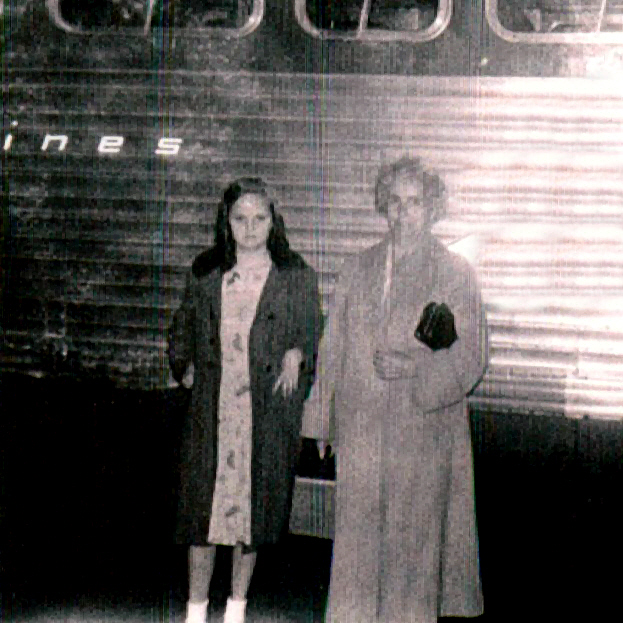 While visiting my Aunt Sandy Pattan during her stay at Elkhorn Valley Rehabilitation Hospital where she is recuperating from a recent surgery, we were talking about our favorite subject…the Byer-Pattan Family History. The subject turned to the many things her parents, my grandparents, George and Hattie Byer had seen come into being during their lifetimes. Grandpa was born on June 15, 1893, and Grandma was born on February 26, 1909. A sixteen-year age difference wasn’t that uncommon in those days, and many people to this day have a large age difference between husband and wife. Of course, the world when Grandma was born was already quite different than the world when Grandpa was born. The automobile was first invented…officially in 1889, but people really didn’t start owning them until about 1929, so by the time my grandparents were married in 1927, a few people might have owned their own car, but many still didn’t. For those, it was still the horse and buggy days.
While visiting my Aunt Sandy Pattan during her stay at Elkhorn Valley Rehabilitation Hospital where she is recuperating from a recent surgery, we were talking about our favorite subject…the Byer-Pattan Family History. The subject turned to the many things her parents, my grandparents, George and Hattie Byer had seen come into being during their lifetimes. Grandpa was born on June 15, 1893, and Grandma was born on February 26, 1909. A sixteen-year age difference wasn’t that uncommon in those days, and many people to this day have a large age difference between husband and wife. Of course, the world when Grandma was born was already quite different than the world when Grandpa was born. The automobile was first invented…officially in 1889, but people really didn’t start owning them until about 1929, so by the time my grandparents were married in 1927, a few people might have owned their own car, but many still didn’t. For those, it was still the horse and buggy days.
Planes were another thing that the most likely saw come into existence. While they existed at the time my grandmother was born, they did not during my grandfather’s early years. Nevertheless, like automobiles, planes were not something that was commonly in use for the average citizen. They were too expensive and so were only for the very rich or for military use. Most people who needed to travel long distances used the trains in those days, and some very likely still used the horse and buggy travel mode. Of course, truth be told, there 
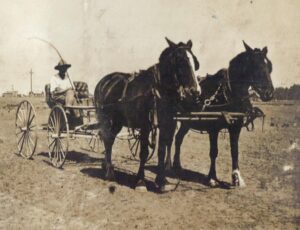 are still those who use a horse and buggy today. The Amish and even a few others, but the others are mostly for show, like parades, races, and such. Personally, my husband, Bob and I dearly love the trains. We ride one pretty much every year. I think trains are in my blood. My dad grew up riding them, because his dad worked as a carpenter for the Great Northers Railroad. Because of that, his kids got a free pass to ride…within reason, of course.
are still those who use a horse and buggy today. The Amish and even a few others, but the others are mostly for show, like parades, races, and such. Personally, my husband, Bob and I dearly love the trains. We ride one pretty much every year. I think trains are in my blood. My dad grew up riding them, because his dad worked as a carpenter for the Great Northers Railroad. Because of that, his kids got a free pass to ride…within reason, of course.
Televisions might have been “invented” in the late 1800s, but they were not common in homes until much later. In fact, in 1947 there were only a few thousand televisions in homes in the United States. I suppose that getting programming together could have had something to do with it, but many people thought it was an unnecessary evil, and maybe they had a point. Prior to that time, families would gather around the radio to hear the latest news…especially when it came to the important news of the wars.
Telephones were just as rare. Invented in 1869 by Alexander Graham Bell, although, it was truly a race between him and other competitors. Nevertheless, he was granted the patent. By 1920, about 35% of homes had phones. These days we couldn’t imagine running our lives without a phone, and who needs a home, we carry them in our purses, pockets, backpacks, and even on our wrist. If you don’t have access to your phone, it 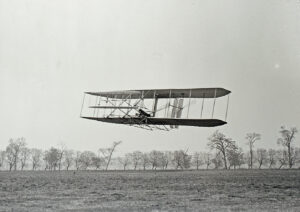
 is entirely your fault…either you forgot it or you let the battery die. Either way…your fault. Aunt Sandy and I agreed that there have also been a lot of changes in our eras, but maybe not quite as drastic as the ones our parents and grandparents saw. I’m quite sure there will be many more changes as time goes on. Space travel, for the common man being one. Wow!! Now, that’s something to think about!!
is entirely your fault…either you forgot it or you let the battery die. Either way…your fault. Aunt Sandy and I agreed that there have also been a lot of changes in our eras, but maybe not quite as drastic as the ones our parents and grandparents saw. I’m quite sure there will be many more changes as time goes on. Space travel, for the common man being one. Wow!! Now, that’s something to think about!!
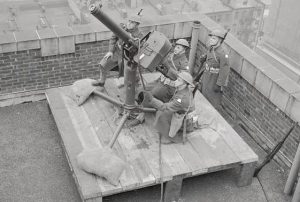 When the Japanese attacked Pearl Harbor, everything changed in an instant. Prior to December 7, 1941, no one had guessed that the Japanese planes could actually sneak up on a place as big as Pearl Harbor…much less 353 Imperial Japanese aircraft (including fighters, level and dive bombers, and torpedo bombers) in two waves, launched from six aircraft carriers. All in all, it was enough to cause a nation to be a little freaked out…to say the least.
When the Japanese attacked Pearl Harbor, everything changed in an instant. Prior to December 7, 1941, no one had guessed that the Japanese planes could actually sneak up on a place as big as Pearl Harbor…much less 353 Imperial Japanese aircraft (including fighters, level and dive bombers, and torpedo bombers) in two waves, launched from six aircraft carriers. All in all, it was enough to cause a nation to be a little freaked out…to say the least.
In the frantic weeks that followed the Pearl Harbor attack, the United States began to look at everything differently. Japanese-Americans were no longer trusted as loyal. Planes coming in to our coasts were feared…even when we knew who they were. Many Americans believed that enemy raids on the continental United States were imminent. Then, on December 9, 1941, everything came to a head when unsubstantiated reports of approaching aircraft caused a minor invasion panic in New York City that sent stock prices falling. On the West Coast, inexperienced pilots and radar men mistook fishing boats, logs, and even whales for Japanese warships and submarines. People were seeing the enemy everywhere, and everyone was tense. After US Secretary of War Henry Stimson warned that American cities should be prepared to accept “occasional blows” from enemy forces, the mood changed. Nobody was feeling okay with enemy blows, occasional or otherwise.
Then, on February 23, 1942, a Japanese submarine surfaced off the coast of Santa Barbara, California, shooting over a dozen artillery shells at an oil field and refinery. No one died in the attack, and the coast received only minor damage, but the attack marked the first time that the mainland United States had been bombed during World War II. The day after the oil field attack, people were still paranoid, and the raw nerves brought itchy trigger fingers. The events of that day aligned to produce one of the most shocking home front incidents of the war. It began on the evening of February 24, 1942, when naval intelligence instructed units on the California coast to steel themselves for a potential Japanese attack. For the next few hours, they military calmly prepared for what they perceived inevitable attack. Shortly after 2am on February 25, military radar picked up what appeared to be an enemy contact some 120 miles west of Los Angeles. Air raid sirens sounded and a citywide blackout was put into effect. Within minutes, the troops manned anti-aircraft guns and began sweeping the skies with searchlights.
Just after 3am the shooting started, triggered by reports of an unidentified object in the skies. The troops in Santa Monica unleashed a hail of anti-aircraft and .50 caliber machine gun fire. Before long, many of the city’s other coastal defense weapons had joined in. The Los Angeles Times wrote, “Powerful searchlights from countless stations stabbed the sky with brilliant probing fingers, while anti-aircraft batteries dotted the heavens with beautiful, if sinister, orange bursts of shrapnel.” The entire scene was so chaotic over the next several  minutes, that it appeared Los Angeles was indeed under attack. Still, many of those who looked skyward saw nothing, but smoke and the glare of ack-ack fire. “Imagination could have easily disclosed many shapes in the sky in the midst of that weird symphony of noise and color,” Coastal Artillery Corps Colonel John G. Murphy later wrote. “But cold detachment disclosed no planes of any type in the sky…friendly or enemy.”
minutes, that it appeared Los Angeles was indeed under attack. Still, many of those who looked skyward saw nothing, but smoke and the glare of ack-ack fire. “Imagination could have easily disclosed many shapes in the sky in the midst of that weird symphony of noise and color,” Coastal Artillery Corps Colonel John G. Murphy later wrote. “But cold detachment disclosed no planes of any type in the sky…friendly or enemy.”
Still, for many others along the coast, the threat appeared to be very real. From across the city reports poured in describing Japanese aircraft flying in formation, as well as paratroopers. There was even a claim of a Japanese plane crash landing in the streets of Hollywood. “I could barely see the planes, but they were up there all right,” a coastal artilleryman named Charles Patrick later wrote in a letter. “I could see six planes, and shells were bursting all around them. Naturally, all of us fellows were anxious to get our two-cents’ worth in and, when the command came, everybody cheered like a son of a gun.” The barrage continued for over an hour, and by the time a final “all-clear” order was given later that morning, Los Angeles’ artillery batteries had pumped over 1,400 rounds of anti-aircraft ammunition into the sky.
It was only in the light of day that the American military units made a puzzling discovery: there appeared to have been no enemy attack. “Although reports were conflicting and every effort is being made to ascertain the facts, it is clear that no bombs were dropped and no planes were shot down,” read a statement from the Army’s Western Defense Command. The counter-attack was, in reality, the whole attack. The only damage during the “battle” had come from friendly fire. Anti-aircraft shrapnel rained down across the city, shattering windows and ripping through buildings. One dud landed in a Long Beach golf course, and several residents had their homes partially destroyed by 3-inch artillery shells. There were no serious injuries from the shootout, but it was reported that at least five people had died as a result of heart attacks and car accidents that occurred during the extended blackout. In a preview of the hysteria that would soon accompany the Japanese internment, authorities also arrested some 20 Japanese-Americans for allegedly trying to signal the nonexistent aircraft.
Over the next few days, government and media outlets issued contradictory reports on what later became known as the “Battle of Los Angeles.” Secretary of the Navy Frank Knox dismissed the firefight as a false alarm brought on by “jittery nerves,” but Secretary of War Henry Stimson echoed Army brass in saying that at least 15 planes had buzzed the city. He even advanced the provocative theory that the phantom fighters might have been commercial aircraft “operated by enemy agents” hoping to strike fear into the public. Stimson later backpedaled his claims, but there was still the matter of the thousands of military personnel and civilians who 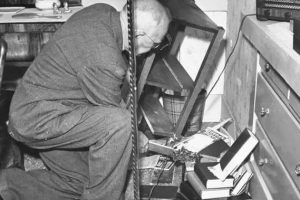 claimed to have seen aircraft in the skies over Los Angeles. According to an editorial in the New York Times, some eyewitnesses had spied “a big floating object resembling a balloon,” while others had spotted anywhere from one plane to several dozen. “The more the whole incident of the early morning of February 25 in the Los Angeles district is examined,” the article read, “the more incredible it becomes.” Politics had stepped in to put its spin on matters, and I suppose that with all that, the truth might never be known…other than no plane was found crashed in Hollywood. In reality, the whole “battle” was brought about by anxious nerves and itchy trigger fingers.
claimed to have seen aircraft in the skies over Los Angeles. According to an editorial in the New York Times, some eyewitnesses had spied “a big floating object resembling a balloon,” while others had spotted anywhere from one plane to several dozen. “The more the whole incident of the early morning of February 25 in the Los Angeles district is examined,” the article read, “the more incredible it becomes.” Politics had stepped in to put its spin on matters, and I suppose that with all that, the truth might never be known…other than no plane was found crashed in Hollywood. In reality, the whole “battle” was brought about by anxious nerves and itchy trigger fingers.
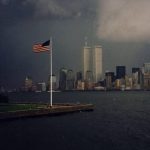 I saw picture of the New York skyline that was taken on September 10, 2001, about 24 hours before the attacks on the World Trade Center on September 11, 2001. It was profound. The picture, taken so innocently, probably by a tourist, foretold nothing of the horror that was eminent. No one knew. No one suspected. No one thought such an attack could ever happen on American soil again, but it did, and just 24 hours after this picture was taken, we would all know that it definitely could, and did happen here again.
I saw picture of the New York skyline that was taken on September 10, 2001, about 24 hours before the attacks on the World Trade Center on September 11, 2001. It was profound. The picture, taken so innocently, probably by a tourist, foretold nothing of the horror that was eminent. No one knew. No one suspected. No one thought such an attack could ever happen on American soil again, but it did, and just 24 hours after this picture was taken, we would all know that it definitely could, and did happen here again.
Just 24 hours after this picture was taken, the lives of 2,996 people would be over (including the 19 hijackers). In addition, more than 6,000 people would be injured. These immediate deaths included 265 on the four planes (including the terrorists), 2,606 in the World Trade Center and in the surrounding area, and 125 at the Pentagon. The September 11th attacks were the deadliest terrorist attack in world history, and the most devastating foreign attack on United States soil since the attack on Pearl Harbor on December 7, 1941…the last time we had thought it could never happen here.
We could go over the deaths of the people here, but we all know the horror that took place. We wanted to close our eyes to the terrible images, and yet, in utter disbelief, we could not look away. We hoped against hope, and prayed without ceasing, that by some miracle, more people would be found alive. Still, as time went on, we knew there would be no more survivors. Nevertheless, we waited and we watched. We watched with hope, but we also watched with anger. There was no reason for such a horrible attack on our nation. We weren’t at war, and we had done nothing to hurt these attackers. Yet, somehow, in their twisted, evil minds, we had. And they reveled in the way that they had managed to secretly pull this attack off.
Now, 17 years later, with so many of our young adults almost unaware of the attacks of September 11, 2001, 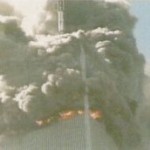
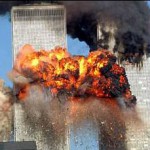 we find ourselves in a place where many people think it could never happen here again, and yet, our world is actually more dangerous now than it was then. We must always be alert. We must never forget those attacks. Never assume that evil will leave our nation alone, if we try to be nice to it. Appeasement only makes us look vulnerable, and that opens the door to attack. It has been proven time and time again. Just like the picture of the New York skyline on September 10, 2001 seemed so serene, it held a dark secret that would only be revealed in the stark daylight of September 11.
we find ourselves in a place where many people think it could never happen here again, and yet, our world is actually more dangerous now than it was then. We must always be alert. We must never forget those attacks. Never assume that evil will leave our nation alone, if we try to be nice to it. Appeasement only makes us look vulnerable, and that opens the door to attack. It has been proven time and time again. Just like the picture of the New York skyline on September 10, 2001 seemed so serene, it held a dark secret that would only be revealed in the stark daylight of September 11.

 Sixteen years…that is the amount of time that has passed since the horrific 9-11 attacks on America. It’s hard to believe that so much time has passed. When I think about the victims of those attacks, I am saddened to think that the beautiful potential their lives had was stripped away from them in an instant. I think about the families they left behind to mourn their loss. And I think about the babies that arrived after the attacks, who would never know their dads. This year marks another milestone those babies will have without their dads…getting their driver’s license….as well as possibly dating. Their dads have missed so many milestones already, and it was just so unfair. Those men went to work that day, fully expecting to come home, but evil doesn’t care.
Sixteen years…that is the amount of time that has passed since the horrific 9-11 attacks on America. It’s hard to believe that so much time has passed. When I think about the victims of those attacks, I am saddened to think that the beautiful potential their lives had was stripped away from them in an instant. I think about the families they left behind to mourn their loss. And I think about the babies that arrived after the attacks, who would never know their dads. This year marks another milestone those babies will have without their dads…getting their driver’s license….as well as possibly dating. Their dads have missed so many milestones already, and it was just so unfair. Those men went to work that day, fully expecting to come home, but evil doesn’t care.
I think about the children who were lost in the attacks. Their lives were cut short before they even had a chance to grow up, and fulfill their life’s full potential. Some of them hadn’t even started school yet. They didn’t get the chance to graduate from high school, which many of them would now have done by now. Their 
 potential to be a productive member of society was squashed in a matter of a few hours on that September day, sixteen years ago, because evil doesn’t care.
potential to be a productive member of society was squashed in a matter of a few hours on that September day, sixteen years ago, because evil doesn’t care.
I am sad for the men and women, who worked in the offices of the World Trade Center, the Pentagon, who simply went about their day, doing the things they had planned, only to have everything ripped out from under them in a moment. Their futures were so bright. They were going places. They had studied and learned their trade, and now they were the people who were ready to go out and change the world. Their dreams were so quickly over. They would do no more. Their chance was gone. And the people on the planes, innocently traveling to their destination…forced to become a bomb in the plot to kill so many. Life for all of them ended that awful day, because evil doesn’t care.
I think of the emergency workers who ran into the buildings…the same way they always do in an emergency, fully expecting to bring the people out and save their lives. They ran in, but most of those who went in, did not 
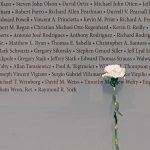 come back out that day. So many of the higher ranked firefighters had to be quickly replaced with firefighters who were less experienced in leadership, because the leaders were gone. So many people in so many areas of the United States and the world had to try to go on with the emptiness that was left by the loss of so many, in all walks of life. The nation had to rebuild…move forward…and deal with the feelings of grief, anger, and loss that the attacks left behind…that hate left behind, because evil doesn’t care about the life it destroyed. Evil just doesn’t care.
come back out that day. So many of the higher ranked firefighters had to be quickly replaced with firefighters who were less experienced in leadership, because the leaders were gone. So many people in so many areas of the United States and the world had to try to go on with the emptiness that was left by the loss of so many, in all walks of life. The nation had to rebuild…move forward…and deal with the feelings of grief, anger, and loss that the attacks left behind…that hate left behind, because evil doesn’t care about the life it destroyed. Evil just doesn’t care.
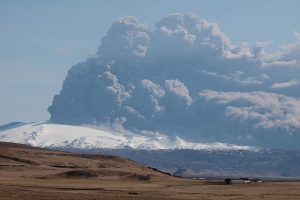 When a volcano erupts, we think of lava and billowing clouds of ash. Those things do happen, but what we don’t think about is what can happen to planes, because of the ash. I suppose that is because we think of that eruption as being a very localized thing. In reality, it isn’t, because the jet stream moves the air around our world, and the ash goes with it. Volcanic ash and airplane engines are not a good mix. Volcanic ash consists of small tephra, which are bits of pulverized rock and glass less than 2 millimeters in diameter created by volcanic eruptions. As the ash enters the atmosphere, it is carried away from the volcano by winds. The ash with the smallest size can remain in the atmosphere for a considerable period of time. The ash cloud can be dangerous to aviation if it reaches the heights of aircraft flight paths.
When a volcano erupts, we think of lava and billowing clouds of ash. Those things do happen, but what we don’t think about is what can happen to planes, because of the ash. I suppose that is because we think of that eruption as being a very localized thing. In reality, it isn’t, because the jet stream moves the air around our world, and the ash goes with it. Volcanic ash and airplane engines are not a good mix. Volcanic ash consists of small tephra, which are bits of pulverized rock and glass less than 2 millimeters in diameter created by volcanic eruptions. As the ash enters the atmosphere, it is carried away from the volcano by winds. The ash with the smallest size can remain in the atmosphere for a considerable period of time. The ash cloud can be dangerous to aviation if it reaches the heights of aircraft flight paths.
Part of the problem is that pilots can’t see ash clouds at night, and ash particles are too small to return an echo to on-board weather radars on commercial airliners. Even when they are flying in daylight, pilots may interpret a visible ash cloud as a normal cloud of water vapor and not a danger…especially if the ash has travelled far from the eruption site. Volcanic ash has a melting point of approximately 2,010° F, which is below the operating temperature of modern commercial jet engines, about 2,550° F. Volcanic ash can damage gas turbines in a number of ways. These can be categorized into those that pose an immediate hazard to the engines and those that present a maintenance problem. As was the case with KLM Flight 867, bound for Anchorage, Alaska, when all four engines flamed out after the aircraft inadvertently entered a cloud of ash blown from erupting Redoubt Volcano, 150 miles away. The volcano had begun erupting 10 hours earlier on that morning of December 15, 1989. Only after the crippled jet had dropped from an altitude of 27,900 feet to 13,300 feet…a fall of more than 2 miles…was the crew able to restart all engines and land the plane safely at Anchorage. The plane required $80 million in repairs, including the replacement of all four damaged engines.
 The 2010 eruptions of Eyjafjallajökull in Iceland, were relatively small for volcanic eruptions. Nevertheless, they caused enormous disruption to air travel across western and northern Europe over the next six days. Additional localized disruption occurred into May 2010. The eruption was declared officially over in October 2010. About 20 countries closed their airspace to commercial jet traffic and it affected about 10 million travelers. This was the highest level of air travel disruption since World War II. It’s strange for us to think that so much can happen to a jet engine is volcanic ash is introduced into it, but that is definitely the case, and if air planes travel in the area of certain types of volcanic ash, planes can be lost. The only prudent thing to do is stop travel in the area…no matter how inconvenient it is to travelers.
The 2010 eruptions of Eyjafjallajökull in Iceland, were relatively small for volcanic eruptions. Nevertheless, they caused enormous disruption to air travel across western and northern Europe over the next six days. Additional localized disruption occurred into May 2010. The eruption was declared officially over in October 2010. About 20 countries closed their airspace to commercial jet traffic and it affected about 10 million travelers. This was the highest level of air travel disruption since World War II. It’s strange for us to think that so much can happen to a jet engine is volcanic ash is introduced into it, but that is definitely the case, and if air planes travel in the area of certain types of volcanic ash, planes can be lost. The only prudent thing to do is stop travel in the area…no matter how inconvenient it is to travelers.
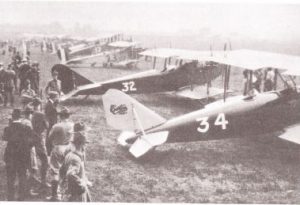 I think most of us have watched car races at some point in our lives, some of us, like my sister Alena Stevens and her husband Mike, have even been to some of the big raceways. Some of us…as teenagers, even participated in drag racing on the public streets, hoping the whole time not to get caught by the police. While these don’t happen every day, they are a normal type of race, but on this day October 8, 1919, a most unusual race was held. It was the first of its kind. The first transcontinental flight took place in 1911, so I suppose that it was only a matter of time before a race had to be held. The first Transcontinental Air Race in the United States took place with 63 airplanes competing in the round trip aerial derby between California and New York.
I think most of us have watched car races at some point in our lives, some of us, like my sister Alena Stevens and her husband Mike, have even been to some of the big raceways. Some of us…as teenagers, even participated in drag racing on the public streets, hoping the whole time not to get caught by the police. While these don’t happen every day, they are a normal type of race, but on this day October 8, 1919, a most unusual race was held. It was the first of its kind. The first transcontinental flight took place in 1911, so I suppose that it was only a matter of time before a race had to be held. The first Transcontinental Air Race in the United States took place with 63 airplanes competing in the round trip aerial derby between California and New York.
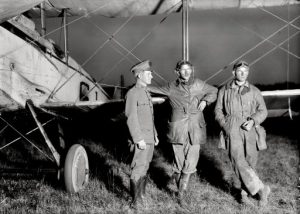
Fifteen planes took off from the Presidio in San Francisco California, and 48 planes left Roosevelt Field on Long Island, New York. The goal was to see who could fly from one location to the other and back with the best time. I know that most of us instinctively look up when we hear an airplane overhead, so just imagine hearing 48 of them flying over at the same time. What an amazing sight that would be. Of course, the planes would eventually spread out some, as the faster ones got ahead of the others. The race was a total of 5,400 miles long, and the winner was Lieutenant Bevin Maynard, who reached Presidio in just over three days rested, serviced his plane and took off again. His actual  flight time was 24 hours, 59 minutes, and 49 seconds. Maynard won the race by having the lowest elapsed time, even though three other people had faster actual flying times.
flight time was 24 hours, 59 minutes, and 49 seconds. Maynard won the race by having the lowest elapsed time, even though three other people had faster actual flying times.
Since that first race, there have been any others, including a Junior transcontinental air speed record and a Women’s transcontinental air speed record. People just seem to have a natural need for speed, and once a record has been set, someone is always there waiting in the wings to break that record. It seems flight is one of the biggest need for speed and record breaking areas of transportation there is.
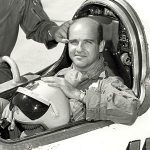 For years after the first planes began to fly, aviators knew that they would eventually go faster and faster. I’m not sure who first came up with the idea of flight at Mach speed, but it was a challenge that the test pilots quickly set their sights on. Test pilots are a notoriously reckless bunch. They know that the planes and speeds they test could get them killed, but they do it anyway, trying to beat the odds. The first Mach 1 flight (documented anyway, since several other pilots claimed to have done it) was Luftwaffe test pilot Lothar Sieber (April 7, 1922 – March 1, 1945) who broke the sound barrier inadvertently on 1 March 1945. At the time, he was piloting a Bachem Ba 349 “Natter” for the first manned vertical takeoff of a rocket in history. In just 55 seconds, he traveled a total of 8.7 miles. The aircraft crashed and he was killed. Serious thought would have to be give to stability at that speed, and the improvements were started immediately. Still, it would take time before anyone dared to try it again.
For years after the first planes began to fly, aviators knew that they would eventually go faster and faster. I’m not sure who first came up with the idea of flight at Mach speed, but it was a challenge that the test pilots quickly set their sights on. Test pilots are a notoriously reckless bunch. They know that the planes and speeds they test could get them killed, but they do it anyway, trying to beat the odds. The first Mach 1 flight (documented anyway, since several other pilots claimed to have done it) was Luftwaffe test pilot Lothar Sieber (April 7, 1922 – March 1, 1945) who broke the sound barrier inadvertently on 1 March 1945. At the time, he was piloting a Bachem Ba 349 “Natter” for the first manned vertical takeoff of a rocket in history. In just 55 seconds, he traveled a total of 8.7 miles. The aircraft crashed and he was killed. Serious thought would have to be give to stability at that speed, and the improvements were started immediately. Still, it would take time before anyone dared to try it again.
Now, the pilots set their sights on the next big dream…Mach 2. It was always a race to be the first to achieve it. Flying at Mach 2 was not going to be very far behind Mach 1. On November 20, 1953, Albert Scott Crossfield became the first person to fly at twice the speed of sound as he piloted the Skyrocket to a speed of 1,291 mph…Mach 2.005. The Skyrocket proved to be of a superior design, and after the record breaking flight, Crossfield was able to safely land the plane. He was not only successful in flying at Mach 2, but he was able to enjoy the victory celebration afterward, and in the world of Mach speed flying, that was a novelty for sure.
 As with any other milestone, records such as Mach 2 flying are just meant to be broken. Mach 3 was the new challenge, and the breaking of this record would come even quicker than the last one had. On September 27, 1956, Milburn G. Apt, flying in the Bell X-2. The plane, which had been nicknamed Starbuster was an X-plane research aircraft built to investigate flight characteristics in the Mach 2–3 range. Apt was a Unites States test pilot, and his specialty was high speeds. He was shooting for and attained the record breaking speed of Mach 3.196 on that fateful September day, but did not live to receive the praise for his accomplishments. The subsequent loss of control of the plane from inertia coupling led to the breakup of the aircraft and Captain Apt’s death.
As with any other milestone, records such as Mach 2 flying are just meant to be broken. Mach 3 was the new challenge, and the breaking of this record would come even quicker than the last one had. On September 27, 1956, Milburn G. Apt, flying in the Bell X-2. The plane, which had been nicknamed Starbuster was an X-plane research aircraft built to investigate flight characteristics in the Mach 2–3 range. Apt was a Unites States test pilot, and his specialty was high speeds. He was shooting for and attained the record breaking speed of Mach 3.196 on that fateful September day, but did not live to receive the praise for his accomplishments. The subsequent loss of control of the plane from inertia coupling led to the breakup of the aircraft and Captain Apt’s death.
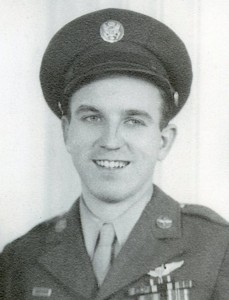 It’s hard for me to think about D-Day, without wondering what things were going through my dad, Allen Spencer’s mind on that day. Each branch of the military had their own part to play and each was in much danger. I suppose it’s possible that the men on the ground were in the most danger, but in reality, anyone who was involved that day faced grave danger. Soldiers could be shot and killed, ships could be sunk, and planes could be shot down. No matter how the attack came, death was often the result, and in battle it was inevitable.
It’s hard for me to think about D-Day, without wondering what things were going through my dad, Allen Spencer’s mind on that day. Each branch of the military had their own part to play and each was in much danger. I suppose it’s possible that the men on the ground were in the most danger, but in reality, anyone who was involved that day faced grave danger. Soldiers could be shot and killed, ships could be sunk, and planes could be shot down. No matter how the attack came, death was often the result, and in battle it was inevitable.
My dad was a young man of just 20 years. That is the age of my two oldest grandchildren, and I simply cannot imagine either of them being in that position. Of course, they could handle it, because twenty year olds have been fighting wars for as long as wars have been fought. It is me, and my mind, that can’t wrap itself around the idea of them being in an airplane providing air support over a battlefield. For my dad, every mission held an adrenalin rush, a degree of excitement, and a large degree of dread, mixed with the need to push back fear. Flying in the B-17G Bomber was an exciting thing for him, but unfortunately it had to  be mixed with the reality of the fact that those bombs were killing people…even if they were the enemy. They often had no say in the matter, they were an enemy of the Allied Forces simply because they lived in the country they did.
be mixed with the reality of the fact that those bombs were killing people…even if they were the enemy. They often had no say in the matter, they were an enemy of the Allied Forces simply because they lived in the country they did.
The air war was vastly different from the ground war, but that didn’t make either more of less dangerous. The Luftwaffe was not widely used on D-Day, but did come racing in over the following days. The weather was bad that first day, and that was definitely to the advantage of the Allied troops. Nevertheless, there were German forces involved, and without air support, they could not have pulled off the victory they did at Normandy. The planes that were there to provide air support, were basically magnets for the 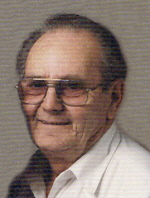 Luftwaffe, and any other enemy forces on the ground. Flying over Normandy was not a task to be taken lightly. Their job was to keep the bombers, tanks, and other soldiers off of the ground troops. The men risked their lives every second that they were in the air. The men on the ground were so vulnerable, and it was imperative that they have good air cover to keep as much enemy fire off of them as possible. It was very clear that without the air support, D-Day would not have been possible.
Luftwaffe, and any other enemy forces on the ground. Flying over Normandy was not a task to be taken lightly. Their job was to keep the bombers, tanks, and other soldiers off of the ground troops. The men risked their lives every second that they were in the air. The men on the ground were so vulnerable, and it was imperative that they have good air cover to keep as much enemy fire off of them as possible. It was very clear that without the air support, D-Day would not have been possible.
I am very proud of the part my dad played in D-Day, as I am of men like my Uncle Jim Wolfe, who was one of those men on the ground on that fateful day. Their job was a very dangerous one, and many of them would not see the sun set that night, but they had a job to do, and so they went out to battle for the freedom of those who were oppressed by the evil that was Hitler. It is a battle we will never forget, nor will we forget the men who fought there, especially those who gave all.
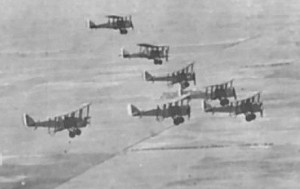
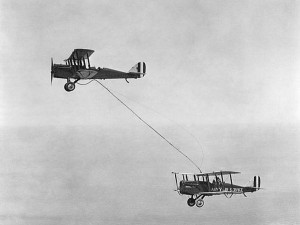 The terrorist attacks that took place at the World Trade Center in New York, the Pentagon in Washington DC, and just outside Shanksville, Pennsylvania on September 11, 2001 brought about changes in our country that we never thought we would see. For the first time in modern aviation history, all air traffic, except for military security planes were grounded. The skies were eerily void of contrails from planes, and the air lacked the sounds from them that we had become so used to that we almost didn’t notice the sounds anymore…unless, like me, you just like planes, and like to watch them.
The terrorist attacks that took place at the World Trade Center in New York, the Pentagon in Washington DC, and just outside Shanksville, Pennsylvania on September 11, 2001 brought about changes in our country that we never thought we would see. For the first time in modern aviation history, all air traffic, except for military security planes were grounded. The skies were eerily void of contrails from planes, and the air lacked the sounds from them that we had become so used to that we almost didn’t notice the sounds anymore…unless, like me, you just like planes, and like to watch them.
Of course, eventually we would begin to see planes again, because we are a nation on the move and planes are essential. The planes began flying again, but with them came a lot more military planes. In most ways that was good, but with that came something else that I never expected to see…mid-air refueling. I have only seen this in action one time. I was on my way into my sister’s house and I looked up because I heard a plane. It was actually two planes…very close together. With 9-11 so fresh in my mind, my first thought was that I might be witnessing an attack above my head. I stood there and watched closely. The planes weren’t so high that you couldn’t see the refueling line as it connected one plane to the other. I was fascinated…and relieved…to witness that. I don’t know how many people have seen it, but my guess is that it isn’t many…at least outside of the aviation industry or the military. Of course, the planes were moving and I didn’t see the line being retracted, but I still felt rather privileged to see that technology in action.
Mid-air refueling is not something that is so new, in fact the first time a plane was refueled in mid-air was on this day, August 23,1923. The Airco DH.4 was a British two-seat biplane day bomber of World War I. It was designed by Geoffrey de Havilland for Airco, and was the first British two-seat light day-bomber to have an effective defensive armament. It first flew in August 1916 and entered service with the Royal Flying Corps in March 1917. The majority of DH.4s were actually built as general purpose two-seaters in the United States, for service with the American forces in France. The plane could do just about anything needed…except fly for an extended time period. Hence the name day-bomber. Then, all that changed when Captain Lowell Smith and Lieutenant John Richter received the first mid-air refueling on June 27, 1923, from a plane flown by 1st Lieutenant Virgil Hine and 1st Lieutenant Frank Seifert.
When we think of mid-air refueling, we picture something high tech, like what I saw, but the technology for it 
 began in the 1920s. To me that seems incredible, but I guess that most inventions take time to develop. Time and hard work, but once they are developed, they can change the course of history. These days, planes are refueled like the two planes I saw and even a plane that refuels a helicopter, which I find completely amazing. The human mind has come up with so many inventions, and I think this one is among the greatest.
began in the 1920s. To me that seems incredible, but I guess that most inventions take time to develop. Time and hard work, but once they are developed, they can change the course of history. These days, planes are refueled like the two planes I saw and even a plane that refuels a helicopter, which I find completely amazing. The human mind has come up with so many inventions, and I think this one is among the greatest.
 When we think of war, we usually think of planes and tanks, bombs and guns, but lately I have been wondering just what the life of a foot soldier was like. My grandfather served in World War I, and after reading a little bit about what it was like for the men in the trenches, I find myself feeling very thankful that my grandfather was a cook. I don’t know how he got that position, considering that so many soldiers were needed, and the number needed grew daily, or even hourly, I just don’t know how he was so blessed to be a cook. Grandpa Byer was always such a gentle, soft hearted man, so I have a really hard time imagining him in a position of having to kill someone. I read that when new foot soldiers came to the front, many lost their lives on the first day, because they got into the trenches, and got an overwhelming urge to peek out over the top to see if the enemy was coming. The instant they peeked over the top, a sniper’s bullet would rip through their head, killing them instantly. The commanding officers began telling the new men to keep their head down…no matter what.
When we think of war, we usually think of planes and tanks, bombs and guns, but lately I have been wondering just what the life of a foot soldier was like. My grandfather served in World War I, and after reading a little bit about what it was like for the men in the trenches, I find myself feeling very thankful that my grandfather was a cook. I don’t know how he got that position, considering that so many soldiers were needed, and the number needed grew daily, or even hourly, I just don’t know how he was so blessed to be a cook. Grandpa Byer was always such a gentle, soft hearted man, so I have a really hard time imagining him in a position of having to kill someone. I read that when new foot soldiers came to the front, many lost their lives on the first day, because they got into the trenches, and got an overwhelming urge to peek out over the top to see if the enemy was coming. The instant they peeked over the top, a sniper’s bullet would rip through their head, killing them instantly. The commanding officers began telling the new men to keep their head down…no matter what.
World War I was supposed to be a war that ended quickly, but that isn’t how it happened. Going in, it was expected that the whole thing would end after one big movement…shock and awe, I suppose, but the other side had a different idea, and the soldiers were forced to hunker down for the long haul. In the end, the war lasted from the fall of 1914 to the spring of 1918. There was movement in the beginning as the Germans marched through Belgium and France on their way to Paris, but then while the lines did advance and retreat, there was not a lot of movement until the war neared it’s end.
I can’t say that I have much insight into the ways of war, other than what I have been told or have read, but it doesn’t take much imagination to be able to picture those fear filled kids hearing the gun shots all around them, just hoping they can keep their wits about them long enough not to do something stupid that could cost them their lives. I don’t think war has changed so much in recent years either. My brother-in-law, Ron Schulenberg told me a little bit about his war experience during Operation Desert Storm. Ron was a foot soldier, and he told me about marching across the desert, stepping over the bodies of the enemy’s dead soldiers, and getting to the point where something like that no longer made him feel like he was going to be sick. For me, it is hard to imagine how much death you would have to see to put you in a place of being able to just step over a dead body and march on.
Almost every war has it boots on the ground part. They are often the first soldiers in the war, and they have to 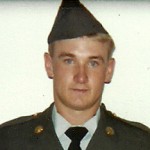 pave the way for those who will follow. They are a tough, almost street smart…or is it trench smart…soldier, who knows what to expect from guerilla warfare, or at least as much as anyone can know what to expect before they go to war. It occurs to me that a soldier going into a war is a completely different person than a soldier coming out of a tour of duty. You simply can’t spend time around all that death, not knowing if you will ever leave that place, and not be completely changed by it. No wonder so many of our soldiers come out of their tour of duty with Post Traumatic Stress Disorder. These men came into the war as kids, and came out feeling like old men. That is not the way they imagined their post high school years, but when you are serving your country, your high school/boyhood ideas have to be set aside to make way for the skills and mindset you must have to survive the life of a foot soldier.
pave the way for those who will follow. They are a tough, almost street smart…or is it trench smart…soldier, who knows what to expect from guerilla warfare, or at least as much as anyone can know what to expect before they go to war. It occurs to me that a soldier going into a war is a completely different person than a soldier coming out of a tour of duty. You simply can’t spend time around all that death, not knowing if you will ever leave that place, and not be completely changed by it. No wonder so many of our soldiers come out of their tour of duty with Post Traumatic Stress Disorder. These men came into the war as kids, and came out feeling like old men. That is not the way they imagined their post high school years, but when you are serving your country, your high school/boyhood ideas have to be set aside to make way for the skills and mindset you must have to survive the life of a foot soldier.

